Market
Meet Collector Robert Tibbles, Who Snapped Up a $1,000 Damien Hirst Work in 1989 That Could Soon Sell for $2.3 Million
Tibbles is selling his collection of early YBA works at Phillips—and the return on his initial investment could be huge.
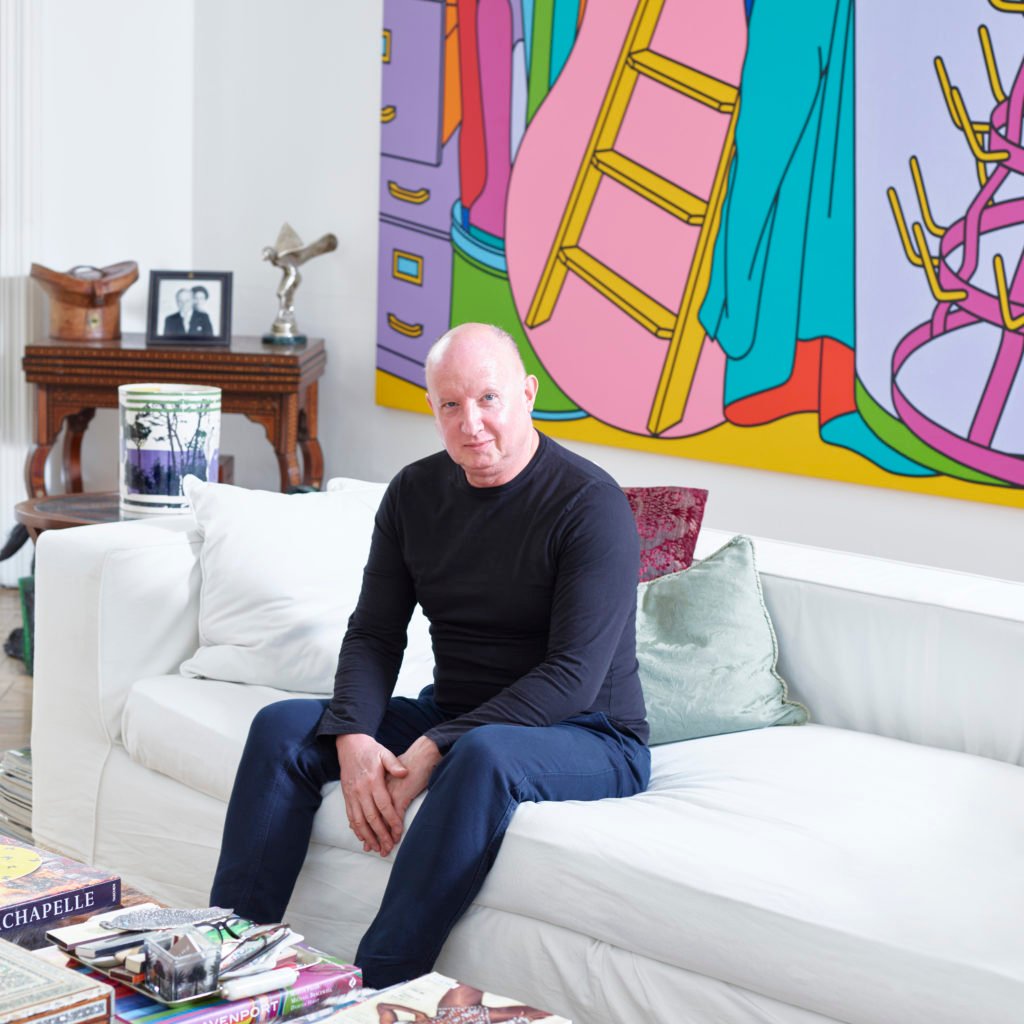
Tibbles is selling his collection of early YBA works at Phillips—and the return on his initial investment could be huge.

Naomi Rea

It’s common these days to imagine that art collecting is akin to investment banking. But back in the 1980s, when bond trader Robert Tibbles was forming his art collection, the two fields didn’t necessarily overlap.
His colleagues, who were more interested in accruing flashy watches and cars, derided his strange purchase, in 1989, of a medicine cabinet by an unknown artist—especially considering that he paid £600 for the thing (which is just shy of $1,000 in today’s money).
But the artist, of course, was Damien Hirst, and now that early purchase could fetch Tibbles 3,000 times his initial investment when it goes up for sale at Phillips in London this week. (The work, titled Bodies, is estimated to sell for between £1.2 million and £1.8 million, or $1.6 million and $2.3 million.)
It’s the kind of financial return anyone would dream of, but this isn’t a case of a quick flip. Tibbles has lived with the piece for three decades, and is now selling it off along with the rest of his YBA-heavy collection in a series of sales at the auction house.
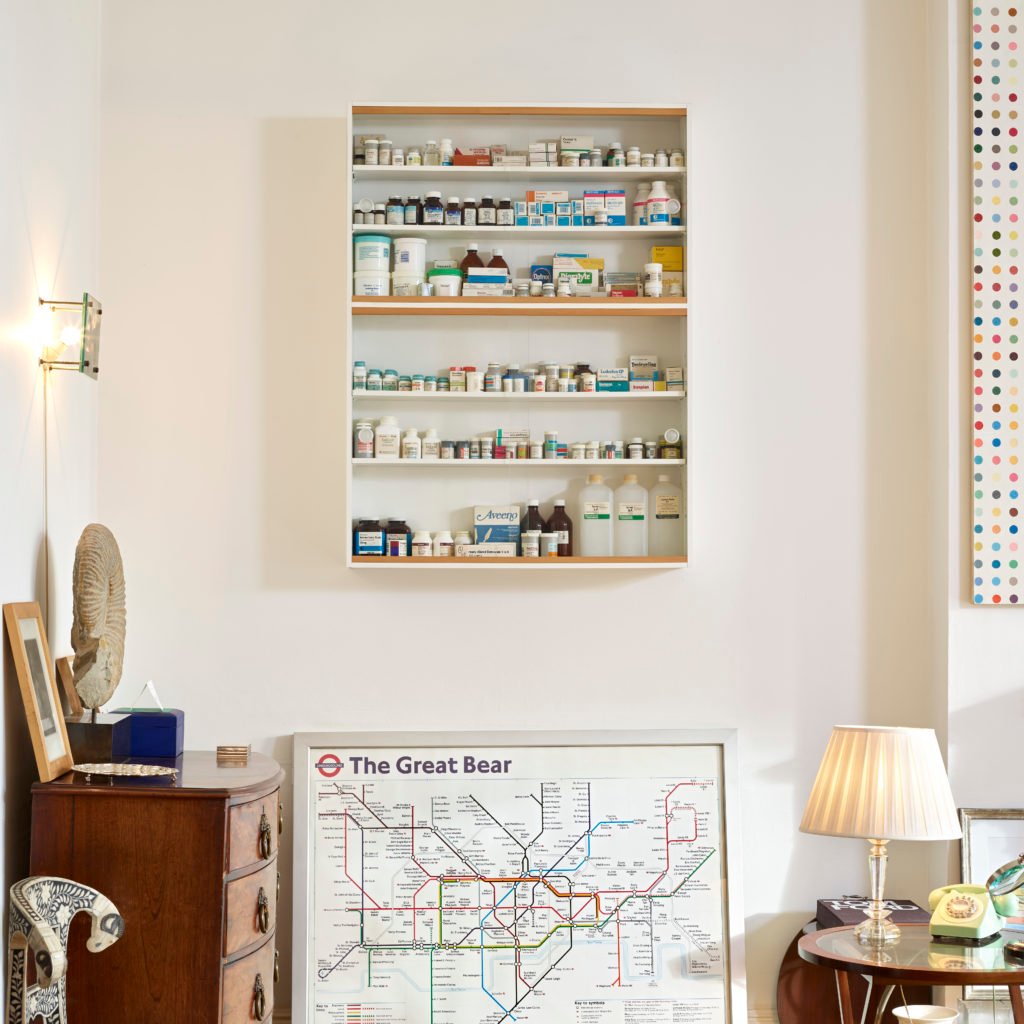
Damien Hirst, Bodies (1989). Image courtesy of Phillips.
Tibbles began building his collection in 1988. He was 28, had just started making money as a trader, and was looking for some art to fill his apartment in London’s upscale Pimlico neighborhood. After getting in touch with the late dealer Karsten Schubert, he was introduced to Hirst, then a young artist.
But while he sometimes bought works directly out of studios, he preferred to work with dealers whose advice he trusted, and whom he relied upon to present works he might be interested in. But even as he traveled through such rarefied circles, his choices were not always met with approval from his peers.
“Collecting was actually quite far away from what anybody I knew—either close friends or just friends—was doing. Particularly having the medicine cabinet up in the flat, and the spots, it challenged a lot of people,” Tibbles says, referring to another work by Hirst in his collection. “The medicine cabinet always, always, had a very strong reaction from everybody.”
The cabinet, titled after a Sex Pistols track, was one of four Hirst had made for his graduation show at Goldsmiths. (It has been shown publicly just three times since then, at the Museo Archeologico Nazionale in Naples; L&M Arts in New York; and Tate Modern, in 2012.)
But while there has long been market interest in such works by Hirst, Tibbles says he could never bring himself to part with it.
“It was like tearing off part of something that was a body,” he says.
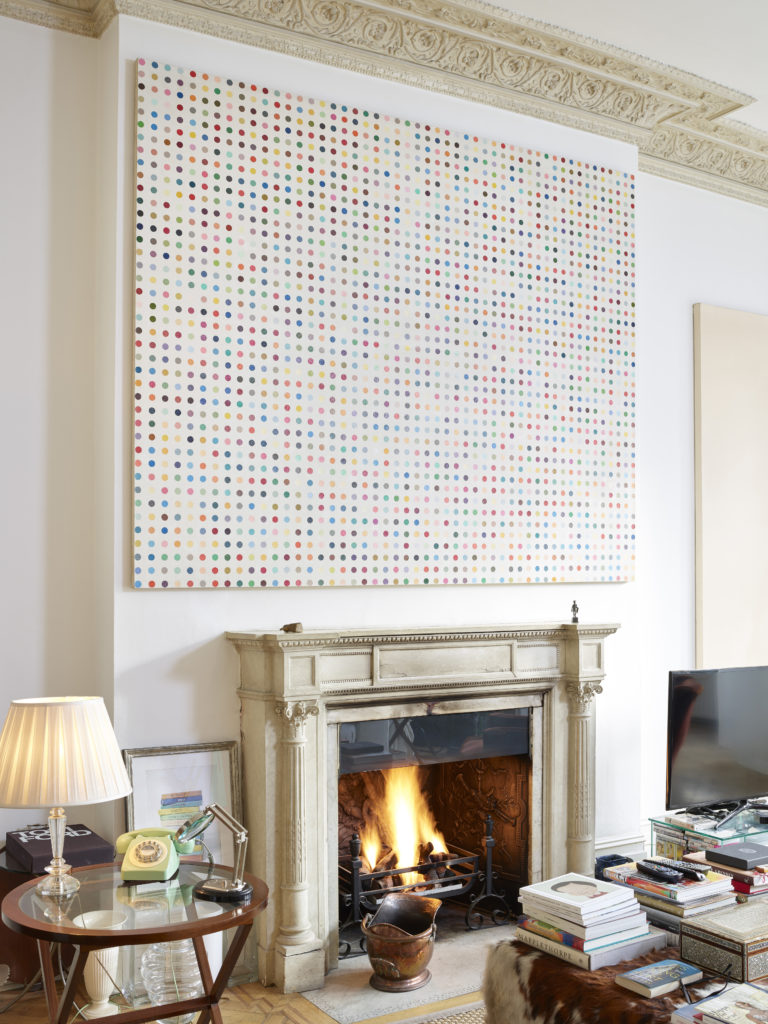
Damien Hirst, Antipyrylazo III (1994). Image courtesy of Phillips.
Despite the impressive profit margin Bodies is expected to make, Tibbles says if he was pushed “on pain of death” to pick a favorite work, it would actually be Antipyrylazo III, a spot painting by Hirst in Tibbles’s collection. At Phillips, it will also be on sale, and is estimated to bring in between £900,000 and £1.2 million ($1.2 million–$1.6 million).
“It’s very uplifting, very warm, and a very enveloping work that really dances,” he says.
The medicine cabinet is the prize item in the sale, which includes five other Hirst works (all six carry a third-party guarantee, so Tibbles has practically already sold them) as well as examples by Gilbert & George, Julian Opie, and Sarah Morris.
There are also two pieces by famed YBA mentor Michael Craig-Martin in the sale, including Full (2000), a huge work that used to hang in Tibbles’s bedroom. It is estimated at £80,000–£120,000 ($100,000–$160,000).
A spokesperson from Phillips tells Artnet News that the estimate is “conservative,” and that the work—a “masterpiece” of Craig-Martin’s—is expected to set a new record.
(The current auction record for a work by the artist is £175,000, or $226,115, realized for a portrait of George Michael commissioned by the late singer. It sold at an auction of Michael’s estate at Christie’s last March.)
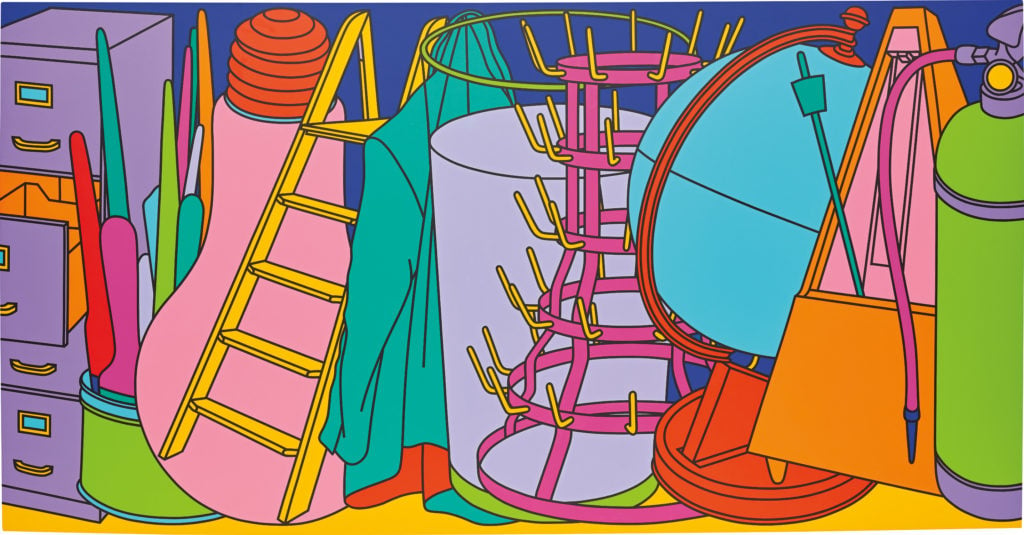
Michael Craig-Martin, Full (2000). Image courtesy of Phillips.
Tibbles shopped his collection at all three major auction houses, but ended up consigning to Phillips in part because of his pre-existing relationship with the company’s global chairwoman, Cheyenne Westphal.
“Cheyenne has always been incredibly kind, super smart, and a very nice person,” Tibbles tells Artnet News. “She knows her stuff, so it felt natural to ask her.”
“The response so far has been very positive, especially given the majority of the works have not been seen since Robert acquired them directly from the artists or galleries the same year of their creation,” Westphal tells Artnet News. (The collection—which Westphal calls a “time capsule” that captures “the genesis of a movement that transformed contemporary British art”—has been on view at the auction house since February 3.)
Asked why he thinks now is the right time to part with his collection, Tibbles says he feels he’s been spoiled by his good fortune. “I was shown all these fantastic works just as the artists had painted them.” That heydey lasted around 15 years, after which making smart additions became more difficult.
“I kept buying works which filled in gaps, and honestly I found that to be a very flat experience,” Tibbles says. Realizing his collection was complete, he says he felt “liberated.”
“I want to live with and look at the stuff that I’ve bought,” he says. “Some people are not like that. Some people are very acquisitive, but not me.”
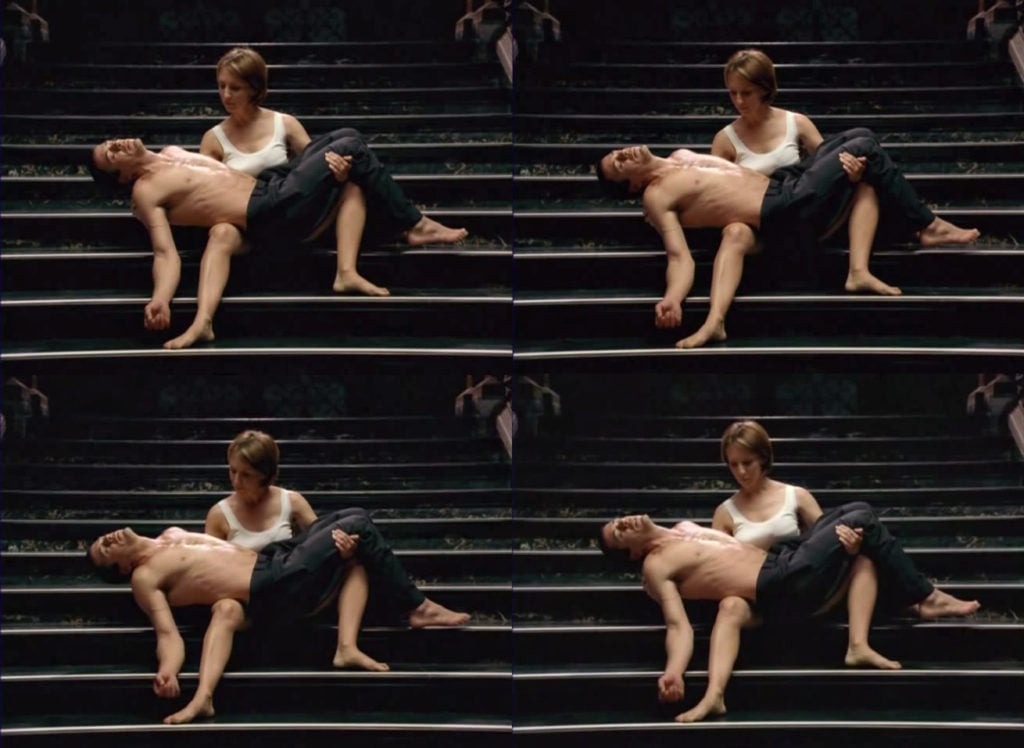
Sam Taylor-Johnson, Pietà (2001). Image courtesy of Phillips.
But it does not matter to him that the collection stays together. “What would give me the greatest pleasure is to know that all of the works have gone to good homes.”
Tibbles says he doesn’t know yet what he will do with all his open wall space, but he is now trying to learn about younger artists.
“I am looking forward to the new phase enormously,” he says. “It is really like having a friendship or falling in love. You don’t know quite what is going to happen.”
“Cool Britannia: The Robert Tibbles Collection” will be sold at at Phillips’s 20th Century and Contemporary Art evening sales on February 13 and 14 and at subsequent sales in London and New York.